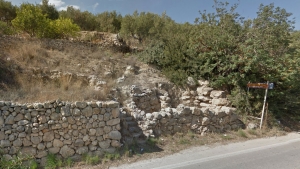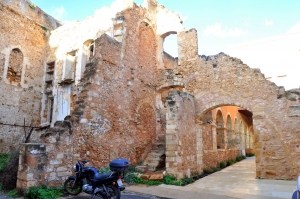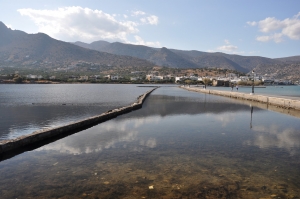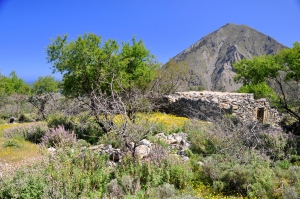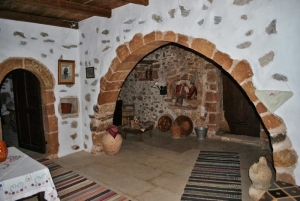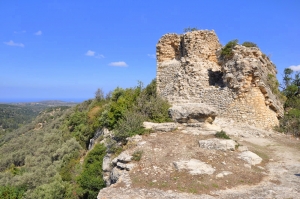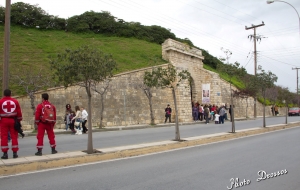At the road connecting Piskokefalo and Sitia we meet the remains of an excavated two-storey Minoan mansion. We can still discern the remnants of rooms, stairs and the protective boulders coming from the neighbouring river of Pantelopotamos or the sea.
The Monastery of Santa Maria was built by Marussa Mengano in 1615 for the Dominican nuns of Chania. The Monastery was described by the Venetian Inquisitor G. Perpigano in 1620, who wrote that it had comfortable cells south from the catholic.
On the road that connects Elounda with Kolokitha peninsula, on the site of the ancient city Olous, we meet the Venetian salt pans that functioned until 1972. We see dozens of cisterns separated by walls in the shallow sea, where water from the lagoon of Elounda was trapped early spring and evaporated till September.
The Minoan villa of Zakros was discovered in 1965 by N. Platon and I. Sakellarakis. It was a rural villa with complete facilities for wine production, very similar to modern ones, and big jars for storing wine. The wine press is exhibited in the Archaeological Museum of Sitia.
The Late Minoan settlement of Vrondas is located in an elevated position, 2km south of Kavoussi. It was inhabited during the setting of the Minoan Civilization by Minoans who moved to the peaks of the Cretan mountains so as to protect themselves from the Dorians who occupied the island.
The museum exhibits many objects and tools used by the older generations from the Turkish Era until ’60s. Some of these are rare folk art samples.
At position Pyrgi of ancient Eleftherna town, located 24km east of Rethymnon, there are the ruins of a fortified tower. This tower was built before the Roman period so as to protect the unique entrance to the ancient town of Eleftherna.





